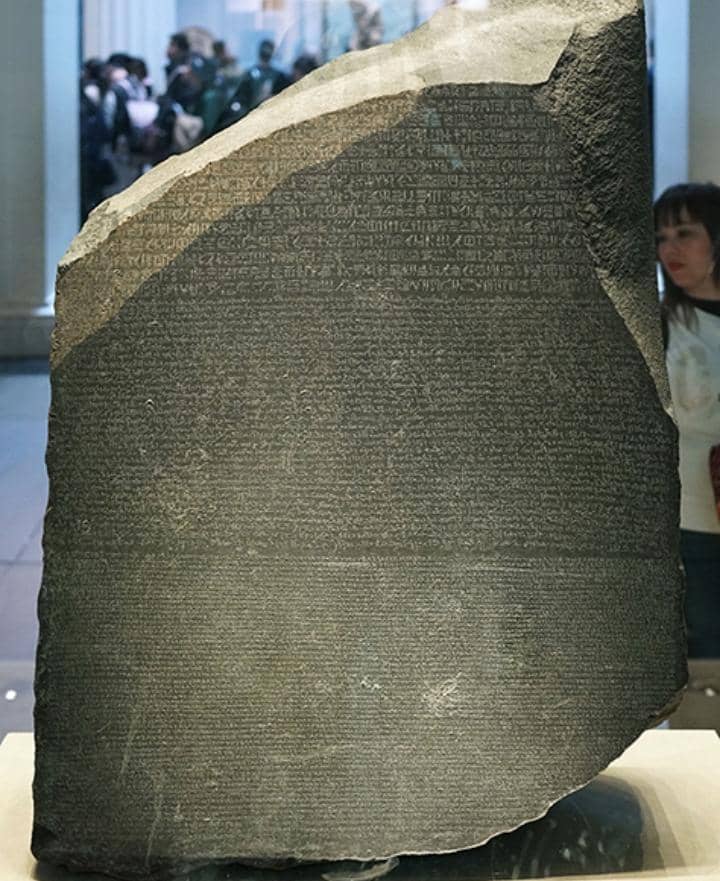The Rosetta Stone, a granodiorite stele inscribed with a decree issued in 196 BC during the Ptolemaic dynasty, is one of the most significant archaeological discoveries in history.
This remarkable artifact, found in 1799 near the town of Rosetta (modern-day Rashid) in Egypt, provided the critical clue that eventually allowed scholars to decipher the long-lost language of ancient Egyptian hieroglyphs.
The stone bears inscriptions in three scripts: hieroglyphic, demotic, and ancient Greek.
The presence of the Greek text, which was understood at the time, allowed scholars to compare the three versions of the decree and determine that they were translations of each other.
This breakthrough, combined with the work of Thomas Young and Jean-François Champollion, eventually led to the full decipherment of Egyptian hieroglyphs, unlocking a vast treasure trove of knowledge about one of the world’s oldest and most fascinating civilizations.
The Rosetta Stone is currently housed in the British Museum in London, where it has been on almost continuous display since its arrival in 1802. Its discovery and decipherment have had a profound impact on our understanding of ancient Egypt, and the term “Rosetta Stone” has become a metaphor for the essential clue to a new field of knowledge.
Rosetta Stone
The Rosetta Stone is an irregularly shaped block of granodiorite measuring 114 cm (3 ft 9 in) high at its highest point, 72 cm (2 ft 4.5 in) wide, and 28 cm (11 in) thick, weighing approximately 760 kilograms (1,680 lb). It was broken in antiquity, and the top and bottom right sections of the stone remain unaccounted for.
Despite its historical significance, the Rosetta Stone has also been the subject of controversy and debate. Some individuals and groups have called for its repatriation to Egypt, arguing that it was unfairly taken as a result of colonial exploitation.
However, the stone’s status as a global cultural heritage has also been emphasized, with the British Museum maintaining that it is best preserved and displayed in its current location.
The Rosetta Stone remains one of the most iconic and important archaeological artifacts in the world, a testament to the power of human ingenuity and the relentless pursuit of knowledge. Its discovery and decipherment have forever changed our understanding of ancient Egypt and the ancient world as a whole.

